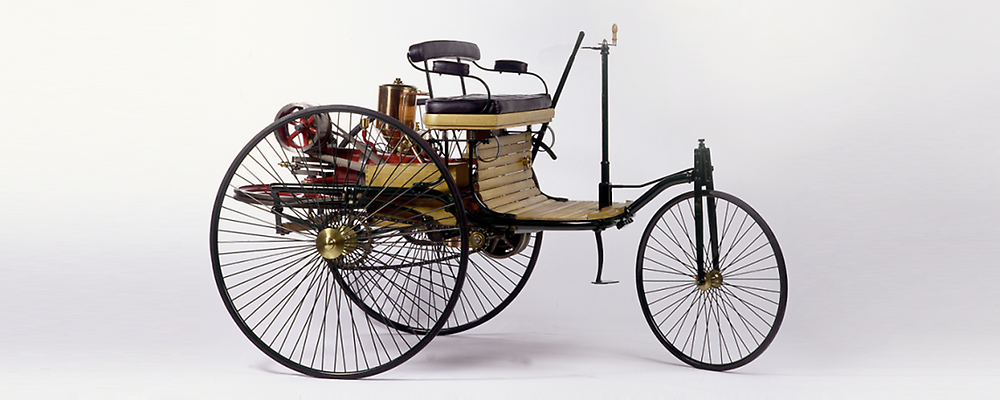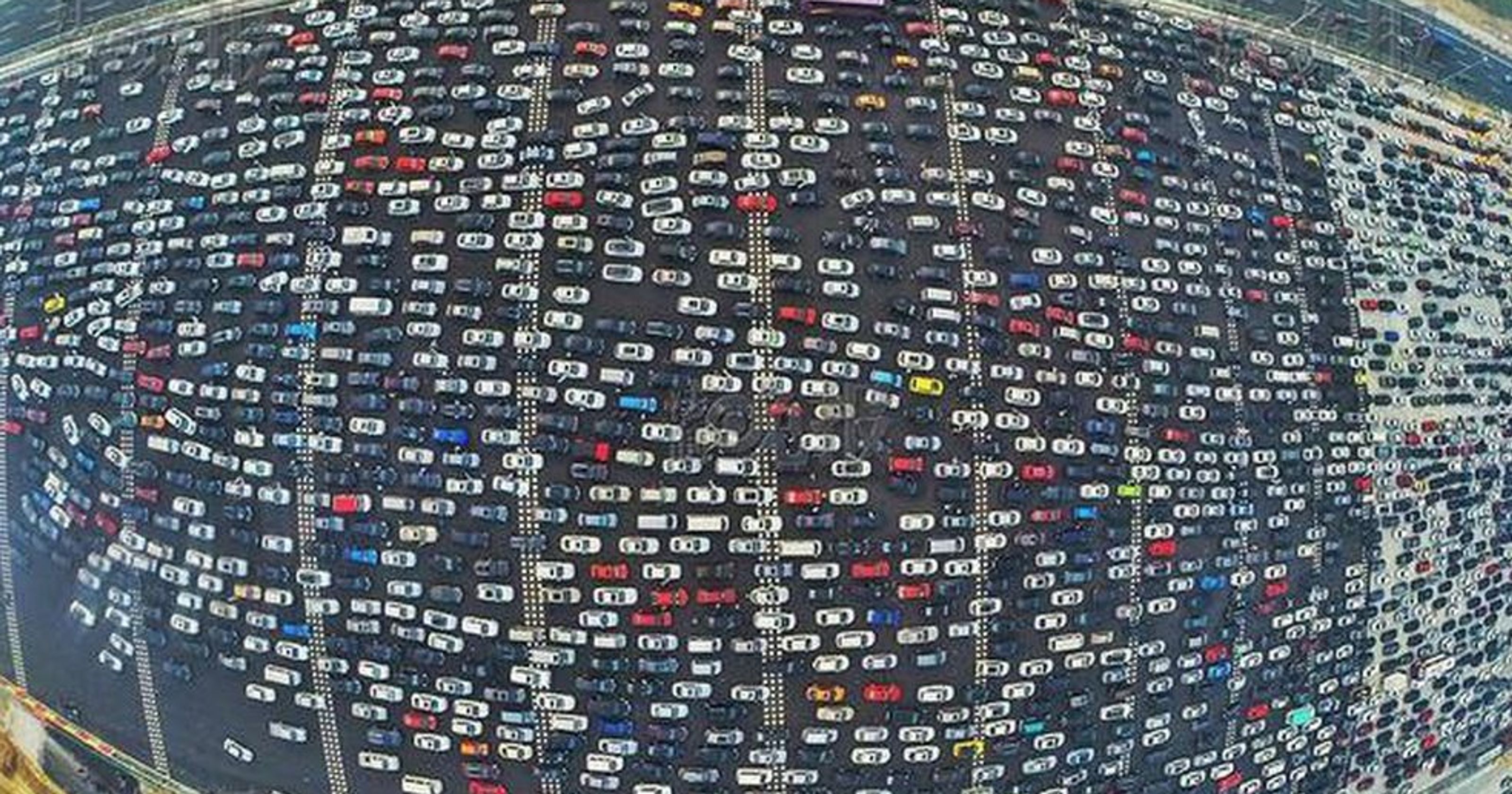In 1888 Bertha and her 2 sons, Eugen and Richard, set off on what would be the world’s first road trip – 180 km from Mannheim to Pforzheim, Germany. This road trip is considered dangerous, but necessary to demonstrate the usefulness and viability of her husband’s recent invention, the automobile. It is a small decision that will change the lives of billions and set in motion industries around the world.
Carl Benz invents the first gasoline engine, which was a one-cylinder, 2-stroke engine, running successfully for the first time on New Year’s Eve in 1879. Six years later, after much success with his engine, he is able to devote it to powering a 2-seater car, although I use the word “powering” liberally since it was 0.75 horsepower.1
On January 29, 1886, Benz applies for a patent for what he termed a “vehicle powered by a gas engine.” 2
Patent number 37435 will change the world in profound ways – most of which were not anticipated, nor desired.

Within 15 years gasoline-powered cars are outselling other motorized vehicles. In 1901 the first mass-produced car comes from the car manufacturer, Ransome Eli Olds – the Curved Dash Oldsmobile. By 1908 the Ford Motor Company launches the Model T, which becomes an instant success. Then, in 1913 Ford installs the first moving assembly line, which helps Ford churn out 15 million cars by 1927. 3
Fast forward to 1956. U.S. President Dwight D. Eisenhower creates the Interstate Highway System that crisscrosses the United States. There are now similar, interconnecting systems around the world, connecting nearly every city on Earth.
In 2016, 88 million cars are sold 4, bringing the total worldwide to over 1.2 billion and climbing.
There were many decisions involved in creating the first gas-powered car. Decisions that set in motion millions of other decisions. From the creation of the gas-powered engine, assembly line, interstate highway system, to the current way of life where cars play a central role, not only to transportation but to the identity of many people (especially Americans and our “car culture”).
Of course, cars have their downsides. They stress the environment, play a central role in global resource conflict and cause over 1 million traffic deaths per year worldwide. In addition, households spend 10-15% of their budgets on cars, gas, insurance and maintenance.
The implications of patent number 37435 are never-ending, for good and for bad.
And it won’t end there. Progress will continue as we develop newer forms or transportation systems and deal with their trade-offs.
Some say we have reached “peak car.” Even the CEO of Ford recently said the company is changing how they do business to adjust for the anticipated slow down in car sales as other forms of transportation come online, including autonomous vehicles. Nevertheless, that first road trip continues to change the world, even as transportation changes and adapts to new needs.
Recommended: This excellent Freakonomics interview with Ford CEO Jim Hackett

There have been trade-offs as the world has built out our transportation networks over the past 100 years. If we were to start from scratch, would we build the same thing? Would we start with electric cars? After all, the first practical electric car was introduced more than a decade before the combustible engine.5 Would we spend more money on rail systems?
How did we end up with such an enormous system that isn’t the most efficient? This happens in all sorts of areas where a system evolves. Over time it turns into something we wouldn’t have wished for in the end.
Is what we got what was intended? All those small decisions over 100 years brought us to where we are now. I use cars as an example, but this happens every day in both industry and our personal lives. Small decisions matter.
Here are some other examples of how small decisions can add up:
This phenomenon has been described in different ways. Edward Lenz, writing on chaos theory, called it “The Butterfly Effect.” In a 1966 essay, Alfred Kahn called it the “Tyranny of Small Decisions.“6 His essay is about economics, but has many business implications. In a 1968 article by Garret Hardin, he calls it the “Tragedy of the Commons.” He describes how small decisions based on personal self-interest can lead people to make decisions that are good for themselves, but bad for the community.7
Many small decisions over time may have unintended consequences. This same phenomenon happens a lot in business. Small decisions are made every day, often without a comprehensive plan or strategy. The business ends up in a different place than they intend.
A lack of focused planning is one of the main reasons I’ve seen businesses veer off course and waste valuable time and money, only to have to retool to get back on track. It’s what I call the Entrepreneur’s Curse – the ability to be distracted by all your wonderful ideas.
Of course, this is different than a pivot, which is when a business changes courses deliberately, according to a new, focused strategy. The difference between the two is intention and planning.
We make thousands of decisions every day. Each decision can take us in various directions. We pay attention to the big ones, but don’t give the small ones as much notice. We should because they add up.
To better help us stay on track, first, we have to know where we’re going by having goals. Then we stay focused by regularly evaluating where our systems and habits are taking us, how they contribute to those goals and if any changes need to be made.
We can ask ourselves: if I keep making these types of decisions, where will I be in a year or 10? What kind of habits am I developing?
To make the results more obvious, take things to the extreme by imagining an exaggerated possible future and consider if that’s what you intend. If you made that decision every day and the consequences are amplified 100 times, what would it mean?
Having a framework with which to make decisions can make it easier. Starting with beliefs and values, know beforehand what you would do in a situation before you’re presented with the choice. For example, if you’ve decided to never smoke, you don’t have to make that decision every time someone offers you a cigarette. You made it once for the rest of your life.
It sounds exhausting to always be mindful of every small decision. Small decisions can change your life but also wear you down if you have to make them constantly. To combat this, create systems and automate as many decisions as you can to cut down on decision fatigue. Streamline your processes so there are fewer decisions to make each day. This allows you to focus on the big, important decisions.
By not overlooking the effects of small decisions we can ensure we end up with something like a streamlined, efficient, transportation system instead of something far less desirable. Instead of death by a thousand cuts, we’ll have met our big goals and a good life built upon a thousand intentional decisions.
Next read about decision fatigue: Why does Mark Zuckerberg wear the same thing every day.
Footnotes
